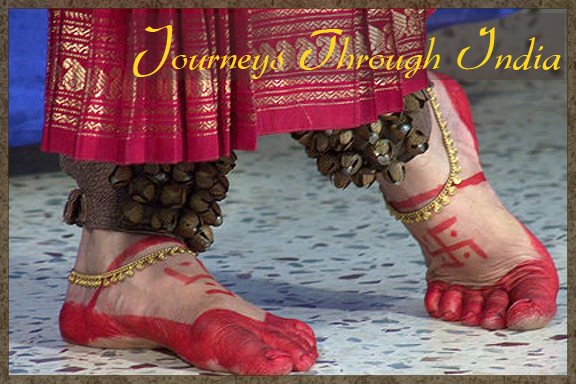Kapalishvara Temple - Chennai
From Christian India, we venture forth to Hindu India, traversing the crowded streets on foot to the Kapalishvara Temple. There has been a temple here since at least the 7th century, but the present temple dates from the 16th century built in the Dravidian style of southern India with its rainbow colored gopura and pavilions in front of the temple. Things are so old here, that already I find myself saying, “Oh, 16th century. That’s new.” To get there, we passed the streaming, packed streets of Chennai. As warned, pedestrians are the last on the pecking order of right-of-way on the streets in India. We carefully crossed streets amongst 4-5 lanes of traffic (mind you, this is on a two lane road – small, two lane road), bus, car, taxi, autobus, bullock, bicycle, then us. Sidewalks, in various states of disrepair, are not for walking, it seems. The people walk on the edges of the street, and we learned to walk on the right side, facing traffic (opposite of the US) to avoid the autobus drivers stopping and asking if we need a ride. Everywhere, tiny little shops selling just about everything. The streets are so dirty, despite the efforts of the people to keep the dirt at bay, that it is hard to see past the dirt and into the shops, noting that they contain everything under the sun. As I learned to look more closely, one saw shops selling basic food next to shops selling toilets, next to shops selling cell phones, next to a shrine, next to a shanty home, on and on and on. Each shop has several inhabitants, all curious, watching us go by. And, because it was so warm, we’d forgotten that it was winter – the sun began to set.
With helpful directions from shopkeepers, we left the everyday world of India and entered the temple district. All of a sudden, there was the same little shops with the same dirt on the outside, but inside! Jewels. Gold. Silver. Saris. Shrines. The gold jewelery shimmered in the windows – each piece worth $1000 US. Such incredible craftsmanship. I would have loved to have gone in to peruse such work, but was too embarrassed. Perhaps on our return. Then, the huge 40 meter gopura towers above the eastern entrance. As we came at night, our camera did not photograph it well – still figuring out the details of the camera. The gopura is quite new, built in 1906 and is plastered with vibrant stucco figures – garish next to the finesse and detail of the statues and figures inside the temple. Here was Hindu India at its most vibrant. The temple is a complex of shrines within a wall. In the back, there is a tank, a very large area of water that must have once been surrounded by gardens and used for cleansing and rituals. When one enters the temple, one goes clockwise around the center shrine which is dedicated to Shiva, one of the three central gods of India, Brahma being the creator or the world, Vishnu the sustainer/protector of the world, and Shiva the destroyer (of evil, of impurities). Of course, all come from one Supreme God, but the Hindu sects associate with one of the three aspects of God as personified by Brahma, Vishnu, or Shiva. This is a very simplistic explanation, as each god has various forms, consorts, wives, symbols, children, and incarnations – each of which have their own rites and rituals. It is very complex … very complete. Of all the religions, Hinduism explains metaphysical cosmology in the most detail.
It is nighttime and the people have come to pray. There are smaller shrines surrounding the large one. Some people are quietly sitting, some pray in front of the various shrines, some prostrate themselves full length while circumambulating the main shrine. A puja ceremony takes place in front a larger shrine, dedicated to Shiva’s consort, Paravati. Bells sound, horns call, drums roll, incense abounds, and in the distance, inside the shrine, one sees a many-tiered lamp moving in front of the statue, asking for the blessings of the deity to answer the prayers of the people gathered. People come, happy and intent on their supplications. We were not sure if we could go to the inner sanctum (we could), there was a long line, it was late, and we were very hungry. Enough for one day. It was a blessing to see our first temple at night, in all its intimacy and vibrancy. Here, we were one of the crowd of Hindus – and no one asked to give us a tour (for payment, of course). I think coming on foot helps be more anonymous.
We ate and slept, and in the dawn of the morning, the call for the Islamic prayer is heard through the window. What a wonderful thing – to awake to a call for people to pray, for that to be the first thing you hear, like the church bells in Europe. This, followed by the musical call of the birds – their own opening prayer and a gift. The World in a Day
next to the bt Indian musicians and dancers - all and I dress in saris., an activity more appealing and enjoy
Saturday, January 3, 2009
Subscribe to:
Post Comments (Atom)


No comments:
Post a Comment